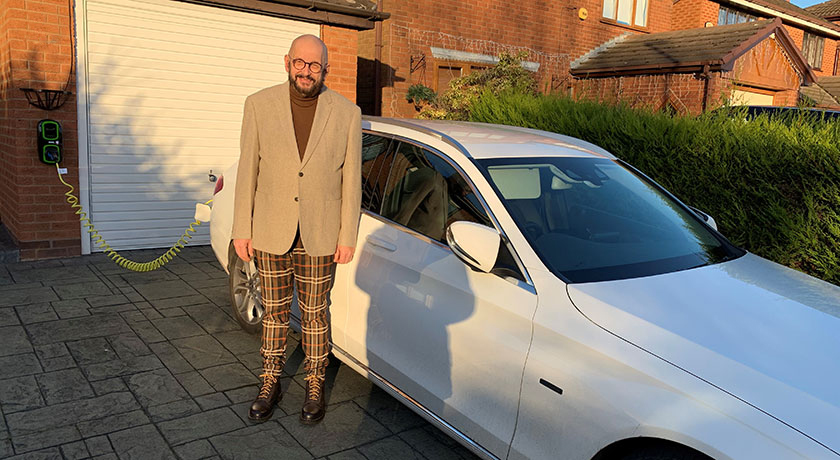 According to government figures, pollution from cars account for more than 18% of UK emissions.
According to government figures, pollution from cars account for more than 18% of UK emissions.
Action in the car industry is considered crucial to cutting emissions to 51% by 2025 and to reach net zero by 2050 – a key target in the 2008 Climate Change Act.
To help fight climate change, the Revd Malcolm Fife, Minister of Christ Church United Reformed Church (URC), Cross Lane United Church, and Huyton URC, has become the first minister in the URC Mersey Synod to choose a plug-in hybrid car.
“I spend a lot of time on the road between my churches and with the Folkus Gallery Band,” he said. “I was driving a gas guzzling diesel SUV and as I’m green in other areas, I researched electric, self-charging hybrid and plug in hybrid versions. I need a larger car as I carry significant amounts of equipment, and also to tow a touring caravan at times.”
There’s a simple difference between plug-in hybrid and conventional hybrid vehicles: the former can be connected to an outside electrical source for charging its battery, and the latter hybrid cannot.
“The process of having the charging point fitted was easy and there was a government grant,” continued Malcolm.
The government provides up to £3,500 on the price of brand new low-emission vehicles that is given to dealerships and manufacturers and included in the selling price.
The minister added: “I’m very happy as the running costs seem very low. I get between 70 to 80 miles per gallon and my charging costs have been below £1 per day.”
In principle, charging an electric vehicle (EV) is akin to charging a mobile phone. Once the battery has been depleted, the car needs to be plugged into a charging point. Public charging points are becoming widely available but you can also have a charging point installed at your home if you have a suitable space.
More information on electric cars can be found here.




